-
 Bitcoin
Bitcoin $83,301.7640
-2.11% -
 Ethereum
Ethereum $1,799.9842
-4.25% -
 Tether USDt
Tether USDt $0.9999
0.00% -
 XRP
XRP $2.0278
-4.59% -
 BNB
BNB $596.2228
-1.03% -
 USDC
USDC $1.0001
0.01% -
 Solana
Solana $116.8645
-7.35% -
 Dogecoin
Dogecoin $0.1617
-6.43% -
 Cardano
Cardano $0.6450
-5.42% -
 TRON
TRON $0.2321
-2.68% -
 Toncoin
Toncoin $3.6664
-9.62% -
 UNUS SED LEO
UNUS SED LEO $9.4145
0.16% -
 Chainlink
Chainlink $12.8328
-5.91% -
 Stellar
Stellar $0.2589
-3.37% -
 Avalanche
Avalanche $18.1600
-6.54% -
 Sui
Sui $2.2723
-8.51% -
 Shiba Inu
Shiba Inu $0.0...01214
-1.89% -
 Hedera
Hedera $0.1611
-4.12% -
 Litecoin
Litecoin $82.9489
0.17% -
 Polkadot
Polkadot $3.9725
-3.23% -
 MANTRA
MANTRA $6.2949
0.51% -
 Bitcoin Cash
Bitcoin Cash $302.6917
-1.17% -
 Bitget Token
Bitget Token $4.5396
-1.25% -
 Dai
Dai $1.0000
0.00% -
 Ethena USDe
Ethena USDe $0.9998
-0.01% -
 Pi
Pi $0.6249
-7.33% -
 Monero
Monero $213.0395
-1.33% -
 Hyperliquid
Hyperliquid $11.5526
-14.44% -
 Uniswap
Uniswap $5.9462
-2.98% -
 Aptos
Aptos $5.2007
-2.20%
What is DeFi on blockchain?
Decentralized Finance (DeFi) uses blockchain for transparent, trustless financial services, eliminating intermediaries. While offering lower fees and user control, risks like smart contract vulnerabilities and volatile cryptocurrencies necessitate careful consideration.
Mar 11, 2025 at 06:55 pm
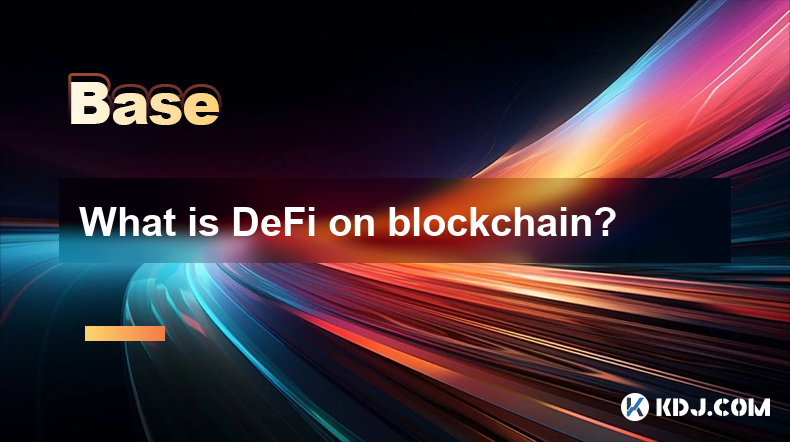
Key Points:
- DeFi, or Decentralized Finance, leverages blockchain technology to recreate traditional financial services in a trustless and transparent manner.
- It eliminates intermediaries like banks and brokers, offering users greater control and potentially lower fees.
- Various DeFi applications exist, including lending and borrowing platforms, decentralized exchanges (DEXs), and stablecoins.
- Understanding smart contracts, gas fees, and risks associated with smart contract vulnerabilities is crucial for engaging with DeFi.
- Security remains a paramount concern, with potential exploits and hacks posing significant threats to users' funds.
What is DeFi on Blockchain?
Decentralized Finance (DeFi) is a rapidly evolving ecosystem built on blockchain technology. It aims to recreate traditional financial services, such as lending, borrowing, trading, and investing, without relying on centralized intermediaries like banks or brokers. This decentralized nature offers potential benefits like increased transparency, greater user control, and potentially lower fees. However, it also introduces unique risks and complexities.
How does DeFi work on Blockchain?
DeFi applications utilize smart contracts, self-executing contracts with the terms of the agreement directly written into code. These smart contracts are stored on the blockchain and automatically execute when predefined conditions are met. This eliminates the need for trusted third parties to oversee transactions, fostering trustlessness and transparency. The blockchain's immutable ledger ensures that all transactions are recorded and verifiable by anyone.
What are the key components of DeFi?
Several key components underpin the DeFi ecosystem. Smart contracts form the core, automating transactions and agreements. Decentralized exchanges (DEXs) allow users to trade cryptocurrencies without relying on centralized exchanges. Stablecoins, pegged to fiat currencies like the US dollar, provide price stability within the volatile cryptocurrency market. Lending and borrowing protocols allow users to lend and borrow crypto assets, earning interest or accessing liquidity.
What are some examples of DeFi applications?
Many DeFi applications are available, each offering unique services. MakerDAO, for example, is a lending protocol using collateralized debt positions (CDPs) to generate stablecoins. Uniswap is a prominent DEX facilitating automated market-making (AMM). Aave and Compound are popular lending and borrowing platforms, allowing users to earn interest on their crypto assets or borrow funds. These are just a few examples of the many innovative applications emerging within the DeFi space.
What are the benefits of using DeFi?
The potential benefits of DeFi are numerous. Users gain greater control over their assets, eliminating the need to trust centralized institutions. Transparency is significantly enhanced due to the public and immutable nature of blockchain transactions. The potential for lower fees compared to traditional financial services is also attractive, although this isn't always guaranteed. Increased accessibility, allowing individuals in underserved regions to access financial services, is another key benefit.
What are the risks associated with DeFi?
Despite the potential benefits, DeFi carries significant risks. Smart contract vulnerabilities can be exploited, leading to the loss of user funds. Impermanent loss, a risk associated with liquidity provision on DEXs, can result in losses for users providing liquidity. The volatile nature of cryptocurrencies can significantly impact the value of assets held within DeFi protocols. Rug pulls, where developers abscond with user funds, are also a concerning risk. Furthermore, the lack of regulatory oversight adds another layer of complexity and uncertainty.
How can I participate in DeFi?
Participating in DeFi typically involves several steps.
- Choose a reputable platform: Research and select a DeFi platform with a proven track record and strong security measures.
- Acquire cryptocurrency: You'll need to own cryptocurrency to participate in most DeFi applications.
- Connect a wallet: You'll need a compatible cryptocurrency wallet to interact with DeFi protocols. Metamask is a popular choice.
- Understand the risks: Thoroughly understand the risks involved before investing any significant amount of capital.
- Start small: Begin with small amounts to gain experience and assess your comfort level.
What are gas fees in DeFi?
Gas fees are transaction fees paid to miners or validators on the blockchain network to process transactions. These fees can vary significantly depending on network congestion. High gas fees can make DeFi interactions expensive, particularly during periods of high network activity. Understanding and budgeting for gas fees is crucial for effective participation in the DeFi ecosystem.
What is the future of DeFi?
The future of DeFi is uncertain but holds significant potential. Continued innovation and development are expected, with new applications and protocols emerging constantly. Increased regulatory clarity and the integration of DeFi with traditional financial systems could significantly shape its future trajectory. However, challenges like scalability, security, and regulatory uncertainty remain significant hurdles to overcome.
Common Questions and Answers:
Q: Is DeFi safe? A: While DeFi offers potential benefits, it also carries significant risks, including smart contract vulnerabilities, hacks, and market volatility. Thorough research and risk assessment are crucial before participation.
Q: How do I choose a reputable DeFi platform? A: Look for platforms with transparent audits, strong community support, and a proven track record. Research the team behind the platform and examine its security practices.
Q: What is a smart contract? A: A smart contract is a self-executing contract with the terms of the agreement directly written into code. It runs on a blockchain and automatically executes when predefined conditions are met.
Q: What is impermanent loss? A: Impermanent loss is the potential loss incurred when providing liquidity to a DEX. It occurs when the price of the assets you've provided changes relative to each other.
Q: What are stablecoins? A: Stablecoins are cryptocurrencies designed to maintain a stable value, typically pegged to a fiat currency like the US dollar, aiming to reduce the volatility associated with other cryptocurrencies.
Q: How can I protect myself from DeFi scams? A: Be wary of unsolicited offers, conduct thorough research on any platform before investing, and never share your private keys or seed phrases with anyone.
Disclaimer:info@kdj.com
The information provided is not trading advice. kdj.com does not assume any responsibility for any investments made based on the information provided in this article. Cryptocurrencies are highly volatile and it is highly recommended that you invest with caution after thorough research!
If you believe that the content used on this website infringes your copyright, please contact us immediately (info@kdj.com) and we will delete it promptly.
- Sentient Launches Open-Source Deep Search (ODS), a New Era for Artificial Intelligence
- 2025-04-03 18:45:13
- Qubetics ($TICS), ImmutableX, and Filecoin Are Top 3 Cryptos to Buy in 2025
- 2025-04-03 18:45:13
- Bitcoin Market Momentum Stalled After US President Donald Trump Announced New Tariffs
- 2025-04-03 18:40:12
- Game Development Firm Enish Buys the Dip, Investing ¥100M in Bitcoin
- 2025-04-03 18:40:12
- The Memecoin Market Continues to Draw In Capital from Both Retail and Institutional Investors
- 2025-04-03 18:35:13
- The Erstwhile-Popular Memecoin, $PWEASE, Finds Its Market Cap and Holder Base Sinking
- 2025-04-03 18:35:13
Related knowledge

Why can the inverted hammer shape appear at the bottom be used as a reversal signal?
Apr 03,2025 at 04:07pm
Inverted Hammer is a common K-line pattern in technical analysis, and is often regarded as a potential reversal signal when it appears at the bottom. This article will explore in detail why an inverted hammer line may be a reversal signal when it appears at the bottom, and provide specific identification and application methods. Basic characteristics of...
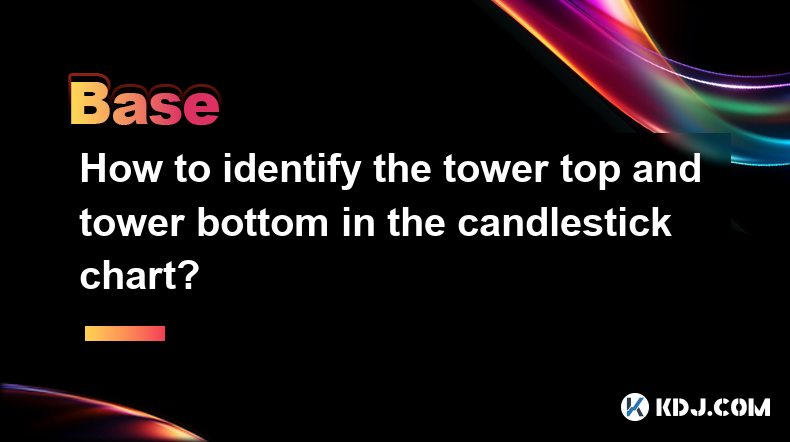
How to identify the tower top and tower bottom in the candlestick chart?
Apr 03,2025 at 04:03pm
In K-line chart analysis, 'Tower Top' and 'Tower Bottom' are two important reversal patterns and are usually used to predict changes in price trends. Identifying these patterns requires careful observation of the price trend and the pattern characteristics of the K-line. Below we will introduce in detail how to identify the 'tower to...
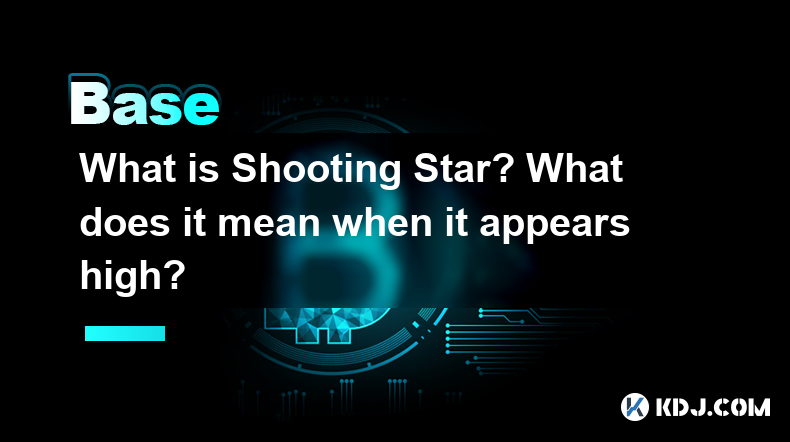
What is Shooting Star? What does it mean when it appears high?
Apr 03,2025 at 03:56pm
In cryptocurrency trading, technical analysis is an important tool to help traders predict future trends of the market. Among them, Shooting Star is a common bearish reversal pattern. This article will give you more details on what 'Shooting Star' is and what it means when it appears at a high level. The definition of 'Shooting Star'Shoo...

What is the difference between dark cloud cover and piercing shape?
Apr 03,2025 at 03:50pm
In the world of cryptocurrency trading, technical analysis is one of the important tools traders use to predict market trends and make trading decisions. Among them, 'Dark Cloud Cover' and 'Piercing Pattern' are two common reversal patterns, which have specific appearance and meaning on the K-line chart. Although they seem similar, there...
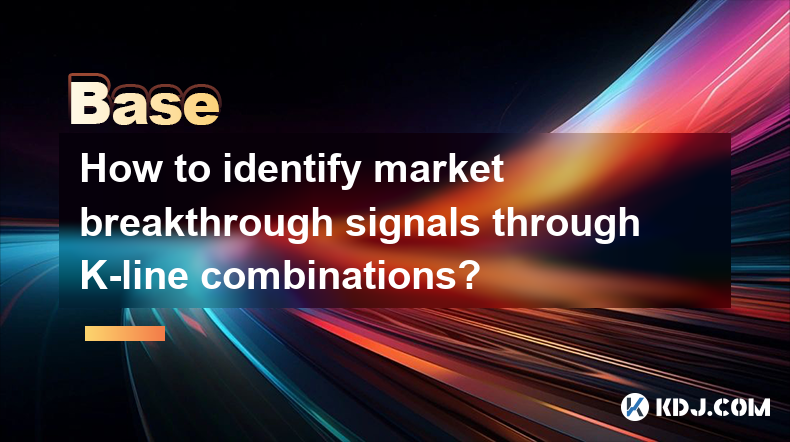
How to identify market breakthrough signals through K-line combinations?
Apr 03,2025 at 03:46pm
In cryptocurrency markets, identifying breakthrough signals is crucial for traders. K-line chart is a commonly used technical analysis tool. By analyzing K-line combinations, traders can more accurately identify the market's breakthrough signals. This article will introduce in detail how to identify the breakthrough signals of the market through the...
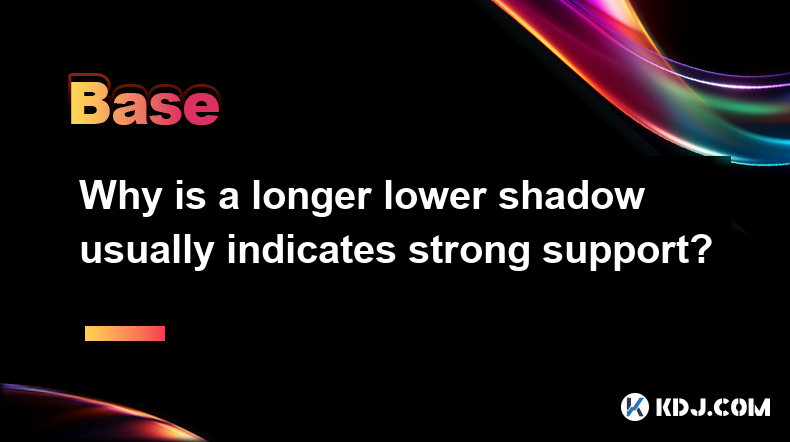
Why is a longer lower shadow usually indicates strong support?
Apr 03,2025 at 03:43pm
The long lower shadow is an important form in technical analysis and is often used by investors to judge the strength of the market's support. The long lower shadow refers to the fact that the lower shadow of a certain K-line is significantly longer than the solid part and the upper shadow in the K-line chart. This pattern usually means that at a ce...

Why can the inverted hammer shape appear at the bottom be used as a reversal signal?
Apr 03,2025 at 04:07pm
Inverted Hammer is a common K-line pattern in technical analysis, and is often regarded as a potential reversal signal when it appears at the bottom. This article will explore in detail why an inverted hammer line may be a reversal signal when it appears at the bottom, and provide specific identification and application methods. Basic characteristics of...

How to identify the tower top and tower bottom in the candlestick chart?
Apr 03,2025 at 04:03pm
In K-line chart analysis, 'Tower Top' and 'Tower Bottom' are two important reversal patterns and are usually used to predict changes in price trends. Identifying these patterns requires careful observation of the price trend and the pattern characteristics of the K-line. Below we will introduce in detail how to identify the 'tower to...

What is Shooting Star? What does it mean when it appears high?
Apr 03,2025 at 03:56pm
In cryptocurrency trading, technical analysis is an important tool to help traders predict future trends of the market. Among them, Shooting Star is a common bearish reversal pattern. This article will give you more details on what 'Shooting Star' is and what it means when it appears at a high level. The definition of 'Shooting Star'Shoo...

What is the difference between dark cloud cover and piercing shape?
Apr 03,2025 at 03:50pm
In the world of cryptocurrency trading, technical analysis is one of the important tools traders use to predict market trends and make trading decisions. Among them, 'Dark Cloud Cover' and 'Piercing Pattern' are two common reversal patterns, which have specific appearance and meaning on the K-line chart. Although they seem similar, there...

How to identify market breakthrough signals through K-line combinations?
Apr 03,2025 at 03:46pm
In cryptocurrency markets, identifying breakthrough signals is crucial for traders. K-line chart is a commonly used technical analysis tool. By analyzing K-line combinations, traders can more accurately identify the market's breakthrough signals. This article will introduce in detail how to identify the breakthrough signals of the market through the...

Why is a longer lower shadow usually indicates strong support?
Apr 03,2025 at 03:43pm
The long lower shadow is an important form in technical analysis and is often used by investors to judge the strength of the market's support. The long lower shadow refers to the fact that the lower shadow of a certain K-line is significantly longer than the solid part and the upper shadow in the K-line chart. This pattern usually means that at a ce...
See all articles























































































